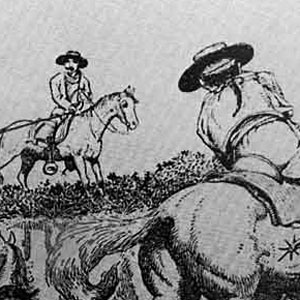Mexican Period
(1821 – 1847)

- The remoteness of California and the weakness of Mexico’s central government lead the majority of Hispanics in the province to identify themselves as Californios rather than Mexicanos.
- Under Mexican rule most restrictions imposed by the Spanish on foreign trade were removed. Russian fur traders began hunting sea otters along the California coast. American traders from Boston quickly dominated California’s economy with the emergence of the “hide and tallow trade.” American manufactured goods were exchanged for Californio cowhides which were the raw materials of the New England shoe industry.
- From the mid 1820s to the outbreak of the Mexican War, California added numerous Yankee traders and settlers to its population. The Americans settled in the province, obtained land grants, married Californio daughters and founded families.
- In 1833, a decree by the Mexican government secularized the California Missions. By 1836 the missions became parish churches and land was granted to Californio ranchers and a few foreign settlers. The Indians, who provided the labor force for the missions, now provided labor for the ranchos. Campo de Cahuenga was granted to Andres Pico who later sold it to the de Celis family. The rancho economy would dominate California for the remainder of the Mexican period.
- Tensions existed between the native Californios and Mexican authorities sent to govern the province by the Central government in Mexico City. Two battles were fought near the Cahuenga pass in 1831 and 1845 between forces loyal to Mexican governors and those favoring Californio home rule. The outcome of the 1845 conflict brought native son, Pio Pico, the governorship.
- Foreign interest in California escalated with official visits by England, France and the United States. The U.S. became concerned that a European power would claim California, possibly in exchange for lessening the crushing foreign debt burdening the Mexican central government.
- Overland travel to California by Americans began with a visit by Jedediah Smith in 1826. In 1841, Bidwell led the first American immigrant wagon into the Sacramento Valley. Soon American settlers began occupying the central valley with Mexican permission. John C. Fremont led a U.S. Army topographical expedition to California in 1843-44.